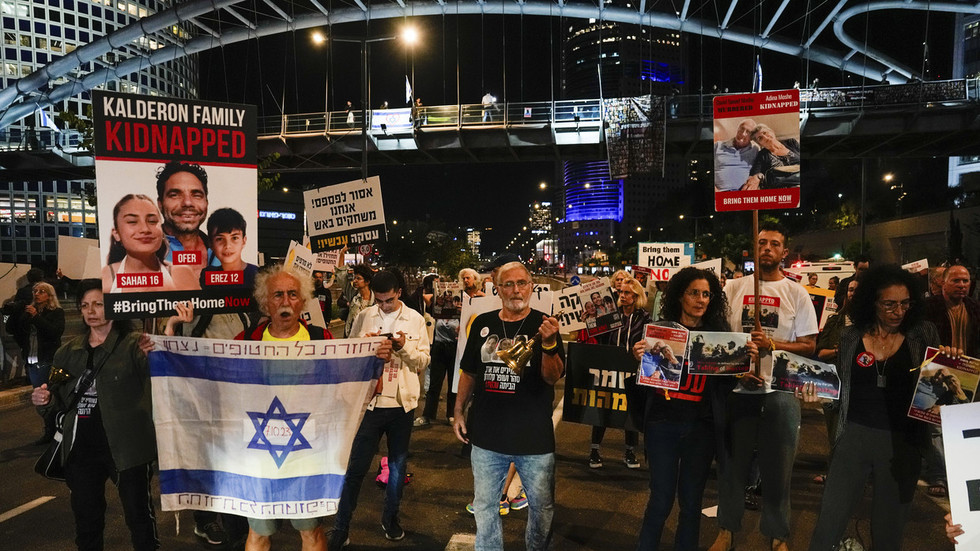There’s nothing more spine-tingling than arguing over the merits of Criterion spine numbers.
October is defined in Webster’s Dictionary as “31 days of horror.” Don’t bother looking it up; it’s true. Most people take that to mean highlighting one horror movie a day, but here at FSR, we’ve taken that up a spooky notch or nine by celebrating each day with a top ten list. This article ranking the ten best Criterion horror films is part of our ongoing series 31 Days of Horror Lists.
Sometimes, you need a little backup. When I was a kid and required parental permission to convince the Blockbuster clerk that it was okay for me to watch Night of the Living Dead, I could have used the Criterion Collection. Whether or not they’re a proper canon is less important than people believing they are. Folks put weight into Criterion, and that weight can open minds that were previously sealed shut. “Oh, Night of the Living Dead is held in the same regard as The Seventh Seal? Let the boy watch it!”
As time marches on, the Criterion Collection becomes more vast and strange. Disney is in there now, right alongside David Lynch and Cheryl Dunye. Digging through their closet takes more than an afternoon. There are whole tracks that could consume your attention, and for our purposes, their horror titles are as diverse as any other realm they’ve absorbed. Narrowing them down to the ten best is actually quite difficult, but our Boo Crew (Rob Hunter, Chris Coffel, Meg Shields, Jacob Trussell, and myself) was eager to meet the challenge.
These ten Criterion horror flicks run every which way. We’ve got monster movies, ghost stories, slashers, and kinkier affairs. There is one movie that’s nearly a hundred years old and a few others from this century. Dive in and use them to let those doubters in your life know that horror can be as artsy-fartsy as anything else.
10. Don’t Look Now (1973)
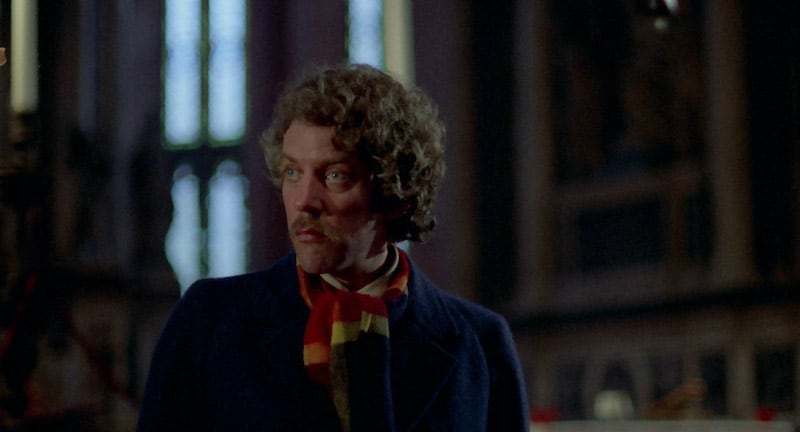
A reason why Nicolas Roeg’s adaptation of Daphne Du Maurier’s haunting tale of tragedy is so celebrated by film lovers — and why it was added to the Criterion Collection — is the level of symbolism and allegory layered into the film’s visual storytelling. As film critic Mark Kermode mentioned in an interview with Roeg, the entirety of the film is in essence summarized in the opening moments, as the characters unknowingly sit by while their daughter drowns in a nearby lake. With flashes of red mixed with images of water and the agonizing face of Donald Sutherland, we’re given a kaleidoscopic image of the terror that is set to unfold. It’s a style of horror storytelling that still feels fresh and unique 50 years later. (Jacob Trussell)
9. Videodrome (1983)
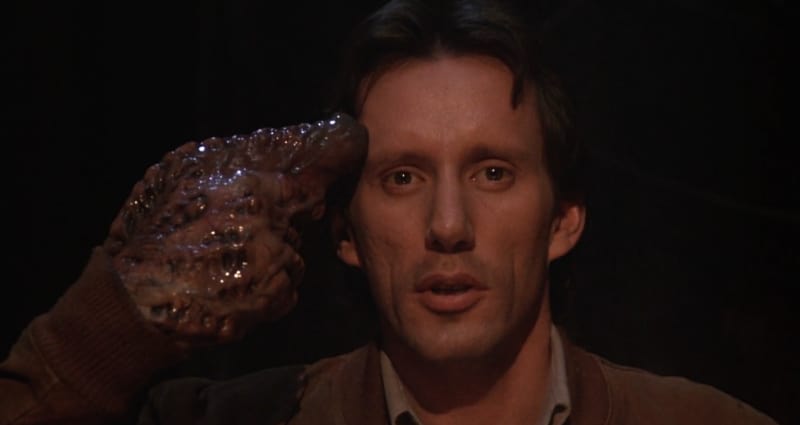
I’m going to be brave and say it: Videodrome is the most deserving physical release on this list. Was David Cronenberg’s techno-horror in dire need of restoration and re-distribution? No, not exactly. Were fans chomping at the bit for an opportunity to see James Woods’ cancerous finger/penis gun between The Battle of Algiers (spine #249) and Slacker (spine #247)? Yes, but that’s not my point. See, there’s just something about watching a DVD of Videodrome — a film repulsed and enamored with media’s corruptive, beating heart — that feels extra special. You don’t get the same erotic, fleshy sting watching Brian O’Blivion proselytize on a streaming service. I don’t know if you know this, but the Criterion edition of Videodrome actually shudders and oozes in your hands as you slide it into your media player of choice. I’ll say this much, I’ve never wanted to extinguish smoldering cigarettes on my clavicle after watching Videodrome on Kanopy. (Meg Shields)
8. Godzilla (1954)

Godzilla is a film you don’t watch once. It demands revisitation. If for no other reason than to remind yourself that this franchise began as something much more than a monster movie. The series has traveled through many different tones, and how we approach Godzilla as a character shifts frequently through the sequels and reboots. The original film directly responds to the atomic devastation brought down upon Nagasaki and Hiroshima. It’s a haunting, horrific endeavor where a small group of humans dares to recognize and prevent a manmade apocalypse. Our terror of the bomb pulsates through every frame, resulting in a much more haunting movie than anything else. The Godzilla design remains top-notch, but it’s what’s underfoot that stays with the viewer and is often forgotten or ignored in the many follow-ups. (Brad Gullickson)
7. The Devil’s Backbone (2001)
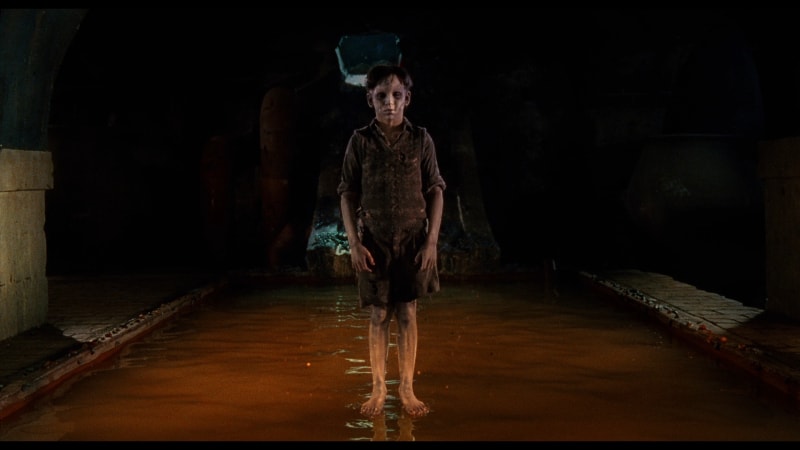
Without The Devil‘s Backbone, Guillermo del Toro‘s career could have evaporated into nothingness. Probably not. Looking at his filmography, it’s clear he would have eventually convinced numerous people to take on his projects. However, in the late nineties, after Mimic, del Toro was at an excruciating point. His time on the cockroach movie had crushed his spirits, and his soul needed a win. The Devil‘s Backbone was a victory for him, but mostly for us.
For the first time, del Toro travels to the Spanish Civil War. Young Carlos is abandoned in an orphanage while the world outside tears itself apart. An unexploded bomb sits in the courtyard; deep below it, a ghost whispers to those who will listen. Through investigating the supernatural mystery, Carlos confronts human evil and a microcosm of the war that rages beyond his sight. The Devil‘s Backbone is a profoundly sad and equally satisfying ghost story. It’s thematically aligned with everything del Toro has produced but told in the most straightforward and stripped fashion. (Brad Gullickson)
6. The Brood (1979)
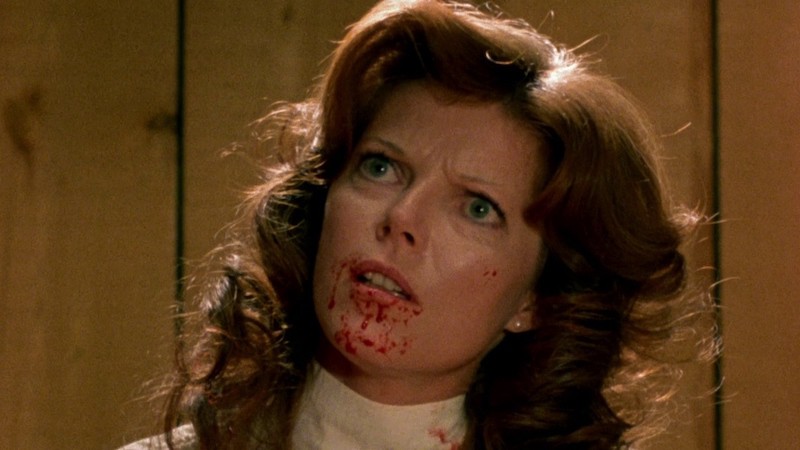
Depending on your mood, you may approach The Brood in one of two ways. Those creepy little demon kids can look rather silly in their brightly colored coats. You can have a laugh at them. If you’ve pickled in some Cronenberg already or are naturally attuned to his wavelength, The Brood is one of the most upsetting movies he’s made.
Frank can’t understand the bruises that are appearing on his daughter Candace. He’s in a disastrous custody battle with his ex, but he can’t imagine Nola being capable of such abuse. His inquiries into these marks plunge him into a catastrophic battle with Nola’s psychotherapist, Dr. Hal, played righteously and viciously by Oliver Reed. Neither Frank nor the audience could imagine the sights he would eventually see during The Brood‘s climax, but it ranks right up there with David Cronenberg‘s most memorable horrors. (Brad Gullickson)
5. Pan’s Labyrinth (2006)
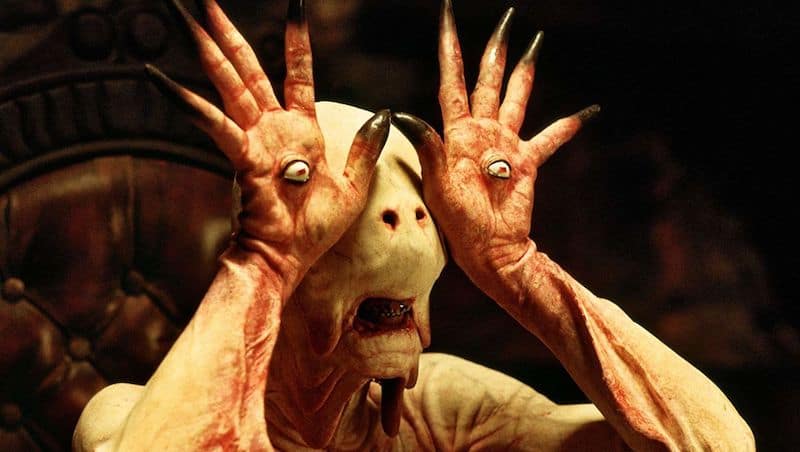
Guillermo del Toro‘s fairy tale follows a 10-year-old Ofelia (Ivana Baquero), who escapes the traumas of the real world by venturing into a beautiful but eerie labyrinth. In the labyrinth, Ofelia meets a Faun (Doug Jones) who believes she is the reincarnation of their long-departed Princess Moanna and a hideous creature known as the Pale Man (also Jones) who likes to eat children. Sometimes you watch a movie, and you instantly think only one person could have directed that movie. Think Goodfellas or No Country for Old Men. Pan’s Labyrinth is one of those movies. According to del Toro, the idea for the film came from a notebook he had been carrying around for twenty years with drawings and various plot ideas written down. It shows on the screen with Pan’s Labyrinth offering what is perhaps the clearest glimpse into the mind and vision of the Oscar-winning director. It’s a film that is magical, scary, happy, and depressing all at once, with breathtaking visuals. A worthy addition to the Criterion Collection, to say the least. (Chris Coffel)
4. Freaks (1932)
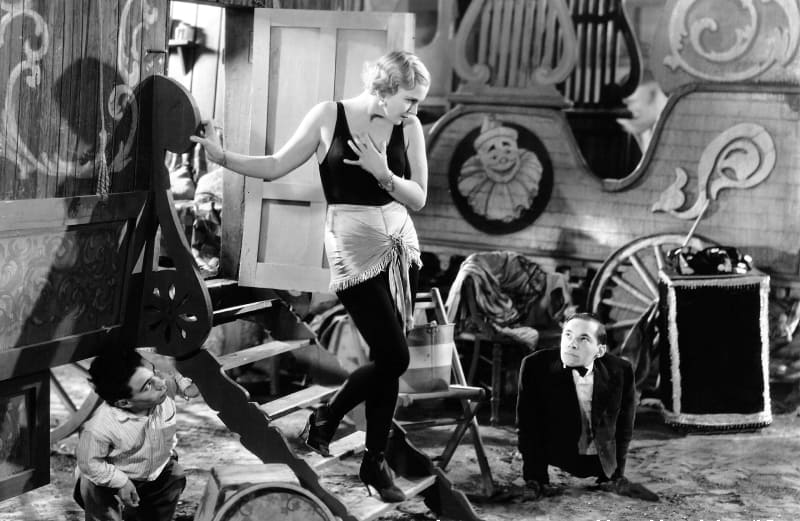
Freaks is an uncomfortable film. While watching it, especially during your first watch, you’re constantly interrogating whether Tod Browning‘s movie exploits or champions the titular characters. There are moments where the script falls into mocking, but ultimately, my read (at least, my current one) is that Freaks showcases the inhumanity people can fall into when they observe others as other. The monster in Freaks is the gorgeous trapeze artist who manipulates Hans into loving her so she can steal his wealth from him. Her wretched behavior is rewarded by Hans’s compatriots turning on her and making her outside appearance reflect the horror she perceives in those she dismisses as less than. (Brad Gullickson)
3. The Silence of the Lambs (1991)
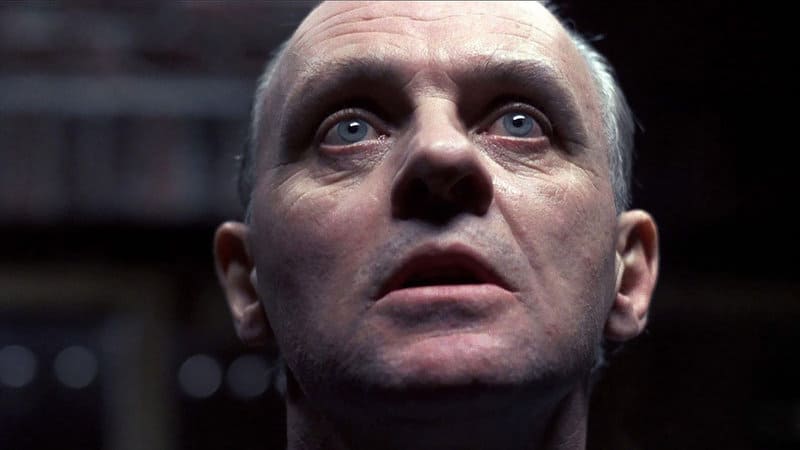
Jonathan Demme is such an assured director. His shots are so clean, so purposeful. He demands his characters look right down the barrel of the camera and forces his audience to engage in conversations they may not want to have. His movies are unsettling but hypnotic. One watch won’t do.
The Silence of the Lambs spawned a ridiculous stream of wannabes. These pretenders can actually be a lot of fun, as they mostly succeed in highlighting the quality of the original. To watch Jennifer 8 or Kiss the Girls is to appreciate the sly wit and confidence of Demme’s film. Hannibal Lecter, as portrayed by Anthony Hopkins, would venture into parody with the Hannibal and Red Dragon follow-ups. However, his first time under the Lecter’s skin still ranks as one of the most hilariously villainous performances. He’s Darth Vader, baby. He’s highly merchandisable but totally shouldn’t be. (Brad Gullickson)
2. Night of the Living Dead (1968)
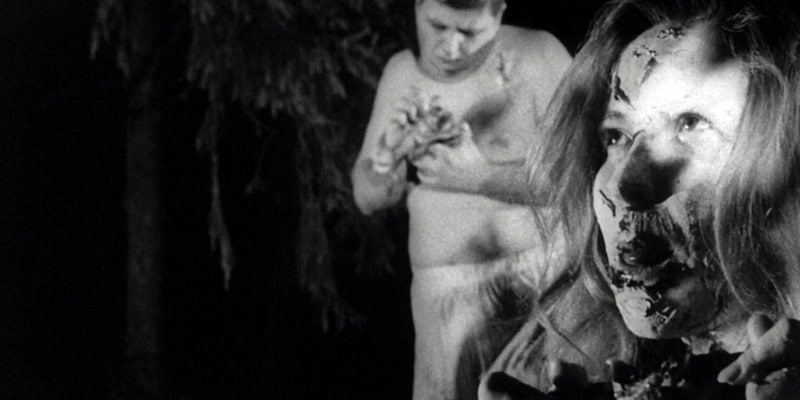
Has there ever been a movie as equally inspirational and influential as Night of the Living Dead? You don’t need Hollywood. You just need some friends with a little talent and a willing heart. George Romero and John Russo loved Richard Matheson‘s I Am Legend and thought they could retool it into something simple to shoot. No vampires. Let’s do zombies. But not those zombies we usually see on screen. They secured their locations and got to work creating a movie that would go off like an atom bomb at the drive-in. In those final sequences, when the last shot is fired, the universe is changed. Movies were never the same afterward. (Brad Gullickson)
1. House (1977)
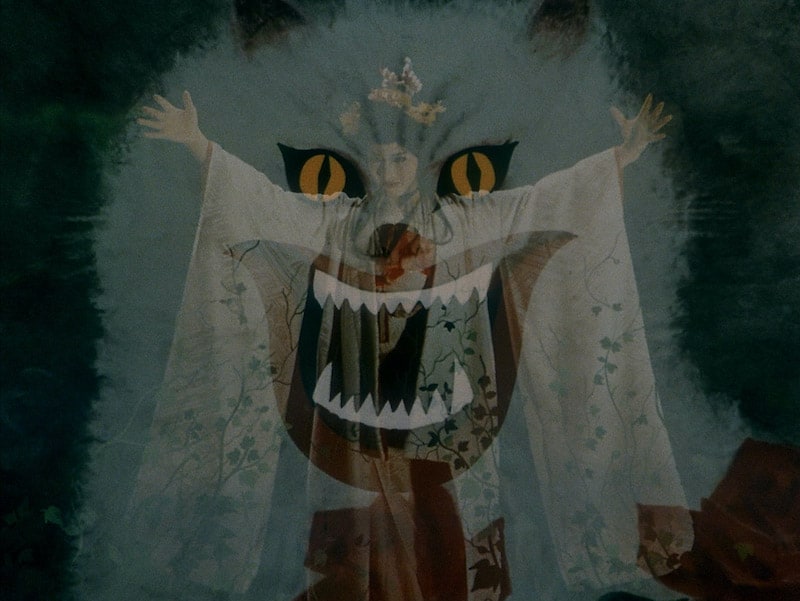
There’s no real formula when it comes to Criterion choosing which films will get a release on their label, and I don’t think they would say any different. Like pornography, they know a Criterion-worthy film when they see it. That’s a good thing and is evident in the wide variety of titles that have seen a Criterion release over the years, from the most obscure piece of slow-motion cinema from abroad to… Michael Bay’s Armageddon? The only constant is that a Criterion release is a release worth paying attention to, and to that point, one of the label’s greatest releases — and they’re best horror release — is Nobuhiko Ôbayashi‘s 1977 masterpiece of the bizarre, House.
A horror film, most certainly as a group of young friends are killed off one by one in a creepy old house, but it’s also so much more. There are laughs throughout as visual gags (a decapitated head flies through the air to land bite-first on another girl’s behind) and blackly humorous dialogue accompany us through the tale. There’s a mad appreciation for creative genius as Ôbayashi uses all manner of optical and practical effects to bring his vision to life, from animated furniture to carnivorous musical instruments. And there’s also a heavy dose of sadness as the truth behind the killings settles in, the combination of grief and jealousy from a generation long passed haunting the halls and the future of Japan’s youth. House is exactly the kind of film deserving of a Criterion release as it’s a welcome introduction to viewers who might otherwise have passed over a subtitled movie with a deceptively generic title — because there’s not a damn thing generic about this house. (Rob Hunter)
But don’t spend all your days trapped inside the Criterion closet. Bust free and devour the rest of our 31 Days of Horror Lists!
Related Topics: 31 Days of Horror Lists, Criterion, Horror

Recommended Reading















